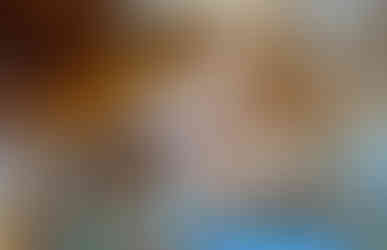Could percent for art in school buildings do a little more?
- Markku Lang

- Apr 16, 2023
- 3 min read
There is a wooden sculpture called "Ponnistus" on the wall of the Oulu University Teacher Training School's restaurant. It is so called "percentage art". The percent for art principle means that a certain part of the construction budget is used for the acquisition of art or artistic design. Most European countries, Australia, many African countries, and US cities and states recommend this principle in various forms.
As an art teacher I sometimes brought students front to this work of art. Students were drawing and painting the shapes, rhythm and shadows of it. We also had discussions about what the work depicts, why it is here and what can be learned from it. Ponnistus is a finnish word and it means to exert oneself, push or try hard.
Art creates art
Perhaps I got the idea from the "Ponnistus" for our own project, which we did with a group of students during the years 1995-1997 in the school's gym hall. The goal was to make a climbing wall with bouldering areas, but so that it would also be a work of art. We chose Oulu's maritime history and especially the famous Toivo frigate as our theme for the project. In our imaginations, we wanted the climbers to identify with sailors tearing up the sails. So we ended up with parts of the ship's hull, the crossbeam of the mast, the sail and the sky, which we created by 'opening' the lowered ceiling above the climbing wall and painting and lighting the 'sky'.
Curved trees were felled from the bank of the Oulu River and bouldering pieces were sawn from natural stones, and we got fixings from our sponsor from the local company Oulun Pultti. I got the University of Oulu's international climbing club Rock & Rope to take care of it and maintain the wall. The budget was extremely low.
In Finland it is quite common to have projects like this, so this was by no means exceptional. I was attracted by the sense of community and inclusion that we had during those almost three years. Teachers of different subjects participated and we celebrated in the opening seremony of the climbing wall with the whole school.
Collaboration between a sculptor and an architect

A month ago, I visited a kindergarten in the picture above. It was completely different from any kindergarten or school I've seen before and I've seen hundreds of them. According to the architects, the Dobrin kindergarten, one hour away from Prague, is a return to the world of fairy tales. It aims to respect children's creative thinking and resembles a small "cottage" that offers harmony, warmth and the opportunity to enjoy a good drink. So this is the translation from Czech language at least:)
Sculptor Jiri Vorel has added a world of his own to the kindergarten. He has carved e.g. three dragons in the yard, which can throw cooling water out from their mouths on the children on a hot summer day if necessary. The characters on the walls create a world that inspires and gets thoughts moving. Vorel's world influences, cheers up and motivates.
It's great to see when architects and sculptors have shared a vision of a learning environment. In Dobrin's kindergarten, Franz Ket's pedagogy is applied, where things are learned with all the senses and with the help of positive pedagogy. The method resembles Montessori pedagogy. But the most important thing in this is that the spaces and activities support and enrich each others.
It was interesting to hear from the teachers that they feel a great responsibility to be able to teach in such an environment. I would say the same myself.
Is the percent for art in our school buildings invested in art in the best possible way?
We have followed research on the effect of learning environments on learning and we are currently starting, together with a Northern European research group, as part of a large international research project, research on what kind of effect the facilities have on students' well-being, motivation and the learning of future skills.
We know that art helps individuals develop their creativity and expand their imagination, and that art requires individuals to think critically and find solutions to complex problems. Creating art is often also therapeutic and helps people manage stress and anxiety. Visual skills or visualization are increasingly important in many industries, etc.
The school has a unique position in public construction in terms of percentage art, and the attachment of art to teaching, experientiality, imagination and especially learning should be thought together with school design in a more positive and deep manner. Dobrin Kindergarten is a success story in this.

































